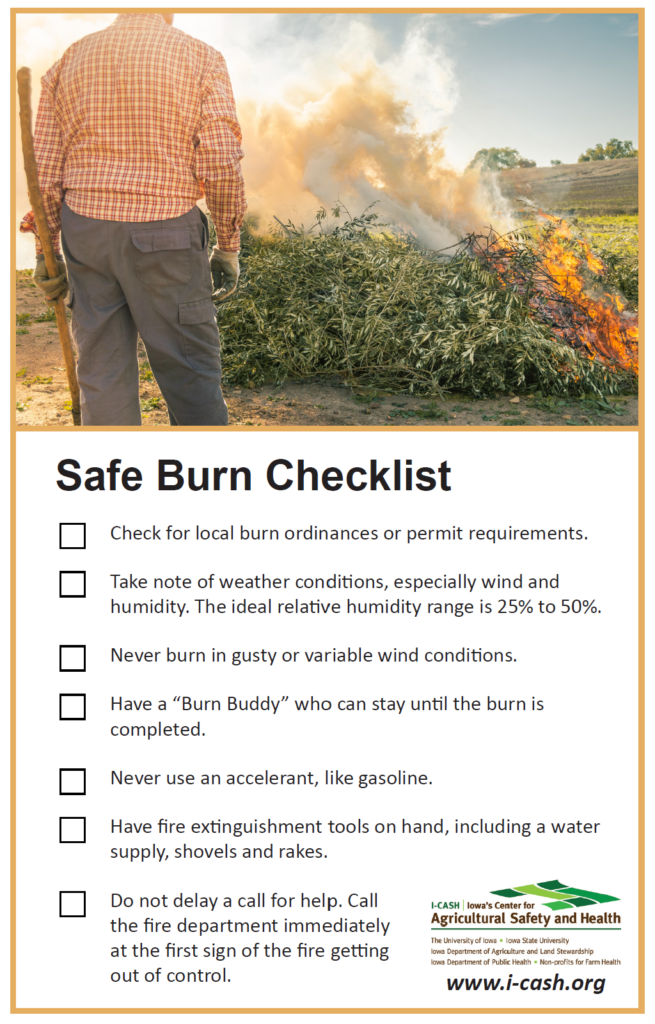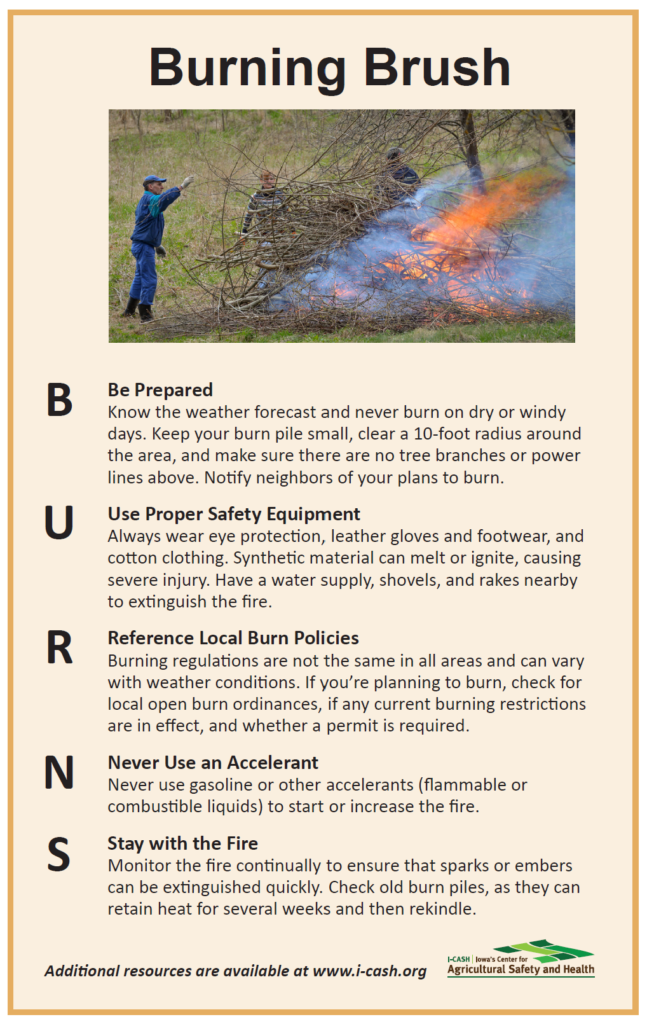Burning leaves, brush, and grass is a common way to dispose of debris in rural areas. However, a seemingly controlled burn can become dangerous very quickly. This spring we created a safe burning card to prevent burn injuries on the farm. This burn card includes detailed information on planning and conducting a burn and a checklist to help you stay on track. Click here to download a printable version of the burn card.

When burning brush remember the acronym BURNS:
Be prepared– Know the weather forecast and never burn on dry or windy
days. Keep your burn pile small, clear a 10-foot radius around
the area, and make sure there are no tree branches or power
lines above. Notify neighbors of your plans to burn.
Use proper safety equipment– Always wear eye protection, leather gloves and footwear, and
cotton clothing. Synthetic material can melt or ignite, causing
severe injury. Have a water supply, shovels, and rakes nearby
to extinguish the fire.
Reference local burn policies– Burning regulations are not the same in all areas and can vary
with weather conditions. If you’re planning to burn, check for
local open burn ordinances, if any current burning restrictions
are in effect, and whether a permit is required.
Never use an accelerant– Never use gasoline or other accelerants (flammable or
combustible liquids) to start or increase the fire.
Stay with the fire– Monitor the fire continually to ensure that sparks or embers
can be extinguished quickly. Check old burn piles, as they can
retain heat for several weeks and then rekindle.
For more information on how to stay safe during a burn, check out this article from our Safety Watch page on tips for safe and successful controlled burns on the farm. Also check out this Safety Watch Article that covers fire prevention tips.


